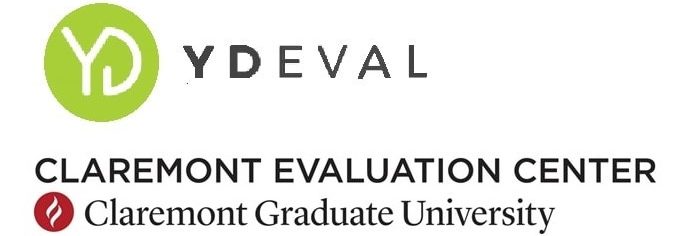Understanding Applied Developmental Psychology
Written By: Nagisa Sunako
As an MA student in Positive Developmental Psychology program at Claremont Graduate University (CGU), I took the class of Applied Developmental Psychology in Spring 2020 with Dr. Tiffany Berry. This blog post is for incoming students to get a better sense of what Applied Developmental Psychology is and some of my favorite takeaways from the class.
Coming to CGU, I was curious to learn and understand on a deeper level the mechanisms underlying applied psychology. I was eager to see how researchers are implementing programs and interventions to allow individuals to achieve their potential, better their lives, and close the infamous achievement gap. But what does that entail? How can we apply psychology to solve real-world problems? These questions and more were answered in this class.
What is Applied Developmental Psychology?
Briefly stated, Applied Developmental Psychology uses empirical research on developmental processes across the lifespan and across contexts to solve social problems. However, researchers find that their research rarely is being implemented by practitioners as intended, if at all. At the same time, practitioners, too, often face obstacles such as research not being readily available, relevant, nor easily digestible. The overarching issue is that there is a missing link between the research community in the “ivory towers” and the practice community in the “earthen trenches.” What Applied Developmental Psychologists strive to achieve is to somehow bridge this enigmatic gap between research and practice.
What Does It Mean to “Bridge the Gap”?
Dr. Tiffany Berry’s Applied Developmental Psychology class provided an invaluable breadth of knowledge of the field including the various frameworks and approaches necessary when addressing pervasive social issues. Furthermore, the course readings helped solidify my understanding of what it means to bridge the gap between research and practice.
One reading in particular helped drive home the idea of what it means to effectively bridge the gap. In their Social Policy Report published in the Society for Research in Child Development (SRCD), Dr. Vivian Tseng, John Easton, and Lauren Supplee outline the importance of research-practice partnerships (RPPs) within the sphere of applied research. RPPs are defined as ongoing collaboration between two parties working towards a shared interest to solve a social problem. For years, there has been a focus on the continuous stream of knowledge flowing out from the research community. However, what this unidirectional approach of knowledge dissemination is missing is the consideration of the obstacles and challenges faced by practitioners, as well as their understanding of what is occurring in the real-world. In turn, this will better inform researchers of methods that will more effectively address social problems. The authors’ emphasis on a “two-way street of engagement” through RPPs brought home the idea of the need for the bidirectional flow of knowledge between research and practice, with each informing the other. Successful RPPs involve collaboration, trust, sharing of values, sustainability, and capacity-building. This idea resonated with me and my understanding of how applied research should be conducted to solve pervasive social issues.
I allude to Dr. Richard Lerner, Francine Jacobs, and Donald Wertlieb’s definition of the final tenet of applied developmental science (ADS): “By acknowledging bidirectionality, applied developmental scientists recognize the importance of knowledge about life and development that exists among the individuals, families, and communities being served by ADS.” This core principle should remain at the forefront of our minds, as we search for ways to effectively and positively impact individuals and communities through consideration of the needs of stakeholders, understanding of context, and collaboration.
The Benefits of Marginality
Out of all the readings from Dr. Tiffany Berry’s ADP class, there was one article I found unique that provided some insight as to what it’s like to be involved in working within the realm of ADP. In Dr. Ruby Takanishi’s article, “Where are you from? Child advocacy and the benefits of marginality,”. For those of you who may not know, marginality is defined as being on the margins of society. In this article, Takanishi shares what it takes to be a child advocate who strives to bridge the gap between research and policy. In addition, she details her experiences of dancing between academia and practice and being in a constant limbo between the two communities.
What stood out to me was the way Takanishi framed her overall experiences of contributing to applied developmental science as a pioneer in the field trying to connect the gap between research and policy. As an outsider to each setting in which she worked as a child advocate, she was able to bring an alternate perspective mixed with a healthy dose of skepticism. While embracing marginality, she brought in new ideas which are valuable and essential when searching for ways to ensure that youth have a chance to live optimal lives.
Takanishi’s framing of marginality in a positive light reflects the ultimate purpose of the Positive Youth Development framework– rather than solely focusing on the remediation of youth’s deficits, the goal is to place an emphasis on strengths that can be optimized for sustainable positive outcomes and successful youth development.
References:
Lerner, R. M., Jacobs, F., & Wertlieb, D. (2005). Historical and theoretical bases of applied developmental science. Applied developmental science: An advanced textbook, 3-29.
Takanishi, R. (2002). Where are you from? Child advocacy and the benefits of marginality. In Higgins-D’Alessandro, A. & Jankowski, K., (Eds.), Science for Society: Informing policy and practice through research in developmental psychology, New Directions for Childand Adolescent Development, 98, 17-28.
Tseng, V., Easton, J.Q., & Supplee, L.H. (2017). Research-practice partnerships: Building two-way streets of engagement. Social Policy Report, 30, 1-17.

